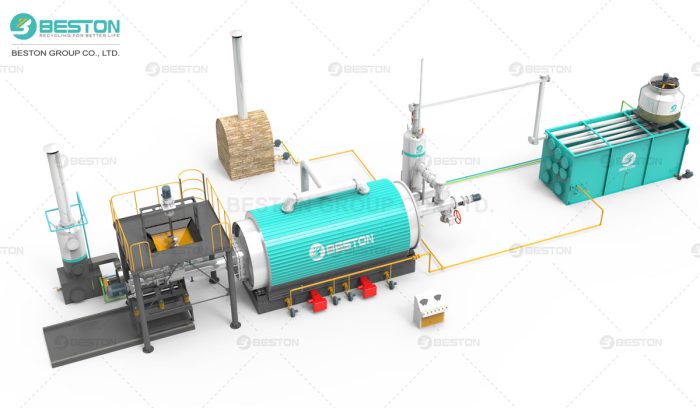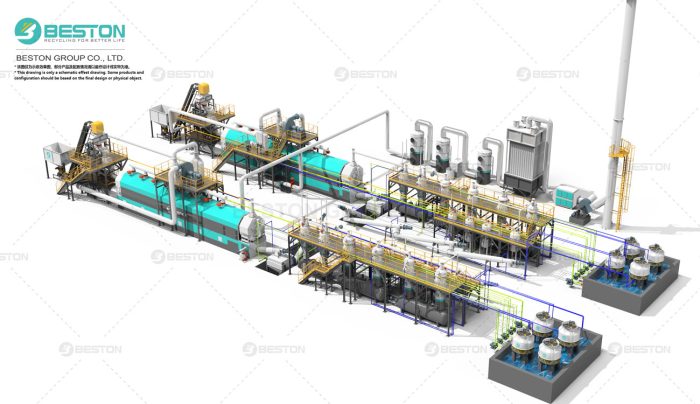Pyrolysis is an innovative thermal decomposition process that converts various organic materials into valuable products, such as biochar, bio-oil, and syngas. This eco-friendly technology has gained significant traction in recent years due to its potential to mitigate waste problems and generate sustainable energy.
I. Batch Pyrolysis Plants

Batch pyrolysis plant is one of the simplest and belongs to small pyrolysis machine. They process a limited amount of feedstock at a time, typically ranging from 100 to 1000 kg per batch. The feedstock is loaded into a reactor, where it undergoes thermal decomposition in the absence of oxygen. Once the batch is processed, the reactor is emptied, reloaded, and the process is repeated. Although these plants have low processing capacities, they are versatile and can handle a wide range of feedstock materials.
II. Rotary Kiln Pyrolysis Plants
The rotary kiln pyrolysis plants utilize a rotary kiln as the main reactor to perform pyrolysis. The kiln rotates, allowing for efficient mixing and heat distribution within the reactor. These plants are well-suited for processing high-moisture feedstock and materials with non-uniform shapes and sizes. Rotary kiln pyrolysis plants are often used for processing biomass, sewage sludge, and other organic wastes.
III. Continuous Pyrolysis Plants
The continuous pyrolysis plant operates continuously and are designed for larger-scale production. They offer significant advantages over batch systems, as they have higher processing capacities, greater automation, and continuous feedstock input. This results in improved efficiency and reduced downtime. The continuous pyrolysis plant is ideal for processing large quantities of waste materials, such as municipal solid waste, plastic, and tires.

IV. Fluidized Bed Pyrolysis Plants
Fluidized bed pyrolysis plants employ a fluidized bed reactor where the feedstock is suspended and heated by a flow of hot gases. The fluidized state of the bed enhances heat transfer and ensures uniform heating of the feedstock, resulting in a higher-quality output. These plants are particularly suitable for processing fine-grained and homogeneous materials like biomass, sawdust, and agricultural residues.
V. Vacuum Pyrolysis Plants
Vacuum pyrolysis plants operate under reduced pressure conditions, which lowers the boiling points of the pyrolysis products. This allows for lower-temperature processing and reduces the risk of thermal desorption unit or undesirable reactions. Vacuum pyrolysis is commonly used for producing high-value chemicals and biofuels from various feedstocks.
VI. Fast Pyrolysis Plants
Fast pyrolysis plants are designed to achieve rapid heating rates and short residence times, resulting in the production of a high yield of bio-oil. The process occurs at temperatures ranging from 400 to 600 degrees Celsius. Fast pyrolysis is suitable for processing a wide range of feedstocks, including wood chips, straw, and certain types of plastics.
Visit Beston Group for more information.